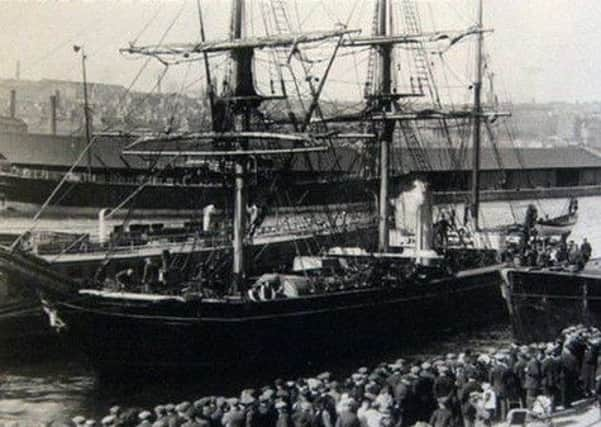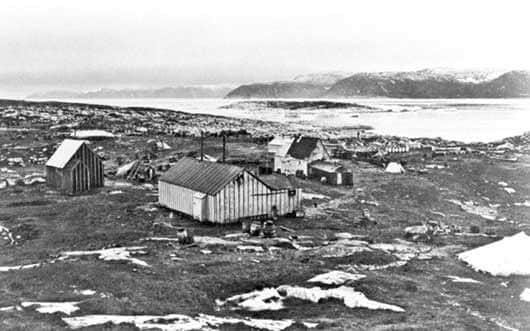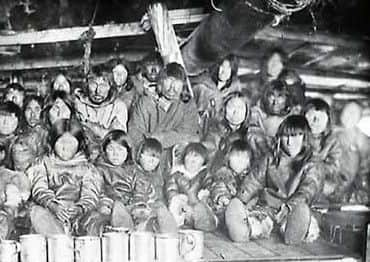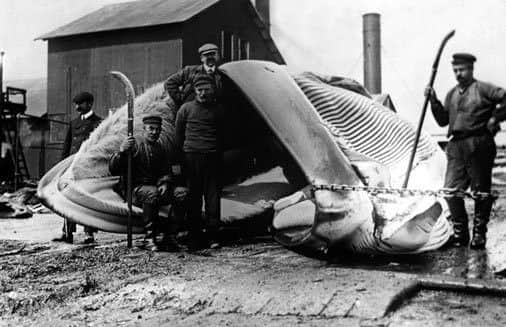The forgotten Inuit ‘human zoo’ of Dundee’s whaling past


But the captains of the industry took to bringing home more dubious cargo, when they travelled back to Scotland with Native Inuits on board to put “on show” in public halls for the “entertainment” of the city’s people.
William Kerr, 51, of Dundee, has researched the connections between Scotland, the whaling industry and the native people of the Arctic, said some of the captains took to presenting a form of “human zoo” – and charged people for the experience.
Advertisement
Hide AdAdvertisement
Hide AdCaptain Adams, took a ship The Arctic to Newfoundland in 1876 for the first time.


In around 1890, he brought back with him Chief Inuit Almick, from Cumberland Sound, of the Qikiqtaaluk region of Nunavut, who stayed with him at his Tayport home for the winter.
Mr Kerr said: “The Dundee whalers and the Inuits were interested in each other and Captain Adams was enthusiastic about bringing Inuits to Scotland
“The main purpose was to show them off to Dundee. That is not saying that the Inuits did not want to come to Dundee, to see new things and experience new places, but the main purpose of Captain Adams was to take them to public halls and show them off as an exhibition.
“The Inuits did draw large crowds.”


The Inuits would also learn English and religious studies while Mr Kerr said.
And while it was fully expected they would wear their full furs and caribou skins while on show to the public, while in their master’s home – and in church – they would be asked to wear European clothing.
Mr Kerr added: “What we do know about Chief Almick was that he did find Dundee very cold, which might seem a big strange.”
The whaling industry thrived in Dundee between the late 1700s and around 1914, with the entire North East coast relying on the trade at a time when other parts of Scotland were faring well from coal mining.


Advertisement
Hide AdAdvertisement
Hide AdAround 600 men from the city would work each spring and summer, with about 12 boats leaving Dundee each year.
The Inuits who had visted Dundee during the winter would return home with the ships leaving the north east in the Spring.
The whale captains use Inuits for labour – and quite often they wouldn’t be paid anything for processing the whales brought ashore.
While some whales were shipped back to Dundee and gutted on the quayside, most were cut up by the Inuits, who the whalers referred to as “yaks”, Mr Kerr said.
“They were viewed as cheap labour and often they wouldn’t pay them anything. The Inuits dird get some items though. They were quite happy to work for biscuits, tobacco and the odd bible.
“The tobacco was a bad situation. They thought it was a herb so they chewed it, smoked it and taught their children to smoke it.”
Mr Kerr said the Inuits went on to demand “better things” from the whalers, such as rifles, muskets, steel- bladed knives and pots and pans. Accordians and sewing machines were also in demand.
But it got to the point where the whalers were making the Inuits go hunting for the whales, with the natives becoming more and more dependent on the Scots for their way of living.
Advertisement
Hide AdAdvertisement
Hide AdIt is understood that Chief Almick also visited Edinburgh and England while on his trip from Cumberland Sound, with a claim he was also introduced to members of the Royal Family.
“There is a belief that he had a good time while he was here but I think ultimately he was just being used.”
The whaling industry came to a halt around WWI when the boats were dispatched for war but another Inuit arrived in the city around 1925.
Called Shoodlue, his legacy will always remain in the City.
For that year he was named Dundee’s Champion Marmalade Eater -after eating half a half-loaf and two pounds of marmalade quicker than all his Dundee counterparts.